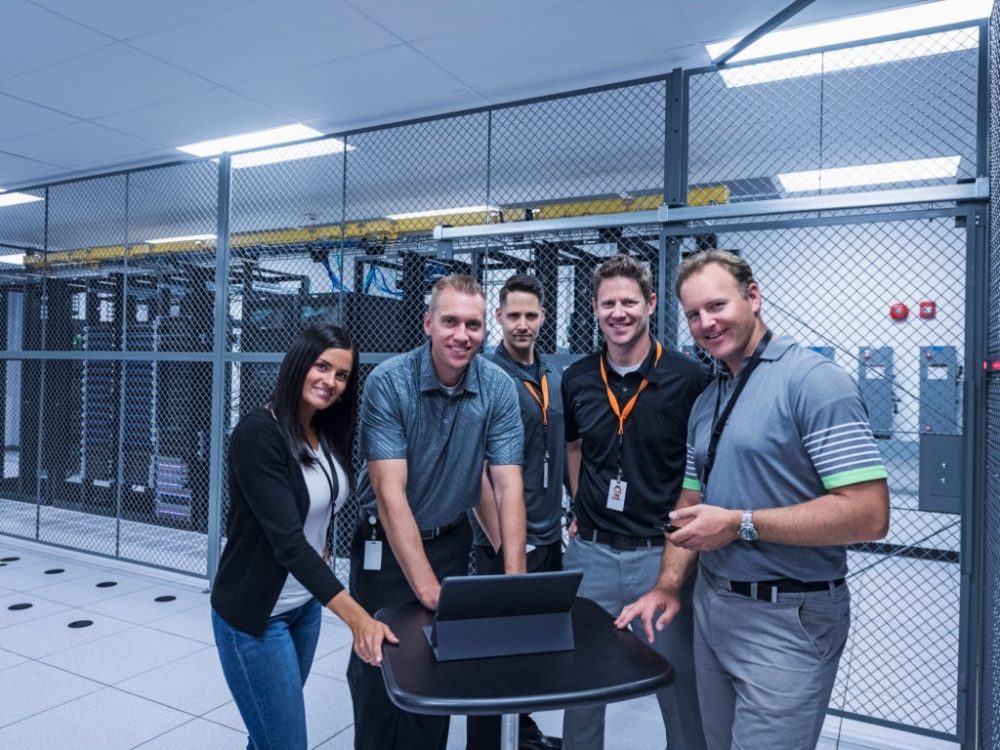Do you have a broken computer or an issue with your network? Technology can be complex and challenging, but IT support tiers can help. Technical support teams provide structure for tech users to quickly and easily locate the correct help tier for their needs. From do-it-yourself fixes to advanced troubleshooting, IT support tiers can make all the difference in getting back on track. Whether it’s a simple issue, a complex ticket, or machine maintenance, there is a tier of IT support with the technical knowledge base and tools to get you back on track.
Table of Contents
What are the Tiers of IT Support?
In short, IT support tiers are the different levels of tech support that employees can access when they experience technical issues. Think of them as an organizational structure companies use to ensure their technical issues are handled quickly and efficiently. The most common tiers of IT support are Tier 1, Tier 2, and Tier 3, but there can also be Tier 0 and Tier 4, which we’ll touch on.
It’s essential to understand the different tiers of IT support so you know who to turn to when something goes wrong.

Tier 0: DIY IT Support
Are you a tech-savvy individual who likes to take matters into your own hands? If so, tier 0 DIY IT support is perfect for you! With DIY IT support, you can troubleshoot and fix your technical issues without calling an IT technician. This way, you can quickly resolve minor annoyances and return to work. Plus, it’s a great way to save time and money since you don’t have to wait for someone else to do the job. Tier 0 may not have the technical resources of the other tiers, but it can effectively handle minor problems.
Many online tutorials and knowledge-based articles can help you with DIY IT support. Moving on to the next tier is best if you don’t feel comfortable doing it yourself.

Tier 1: Basic Technical Troubleshooting
Tier 1 is your primary help desk technician. Tier 1 service desk solutions are perfect for simple tech issues that require minimal knowledge and time to solve at the start of the troubleshooting process. Tier 1 technicians can help you with system resets, logging issues, software installation, and more. Perfect for those who need a quick fix, depending on the issue type.
What to Expect from a Tier 1 Technician
Tier 1 professionals have a basic level of skills and are good at providing basic troubleshooting and diagnosing problems of common issues. They will quickly identify the issue and provide helpful solutions to get your system back up and running. Plus, they’ll be able to offer advice on preventing future problems and keeping your system healthy. Since Tier 1 is the first point of contact for incoming support issues, they will have a lot of employee interaction for many IT issues.
Tier 1 technicians usually have excellent customer service skills because they handle the majority of customer tickets that come in. A qualified technician will provide helpful solutions to quickly get you back up and running. Plus, they can also offer advice on how to prevent future problems and maintain a healthy system. Level 1 technicians tend to handle incoming tickets and phone calls. Once the Tier 1 technician has identified the issue, they may need to pass it on to a Tier 2 technician for more in-depth troubleshooting.

Tier 2: In-Depth Technical Troubleshooting
If you’re dealing with a tech issue requiring more digging, Tier 1 will send incoming support tickets to Tier 2! These knowledgeable technicians are well-versed in more complex troubleshooting and problem-solving scenarios. They’ll be able to help you quickly identify the root cause of your issue and provide solutions that go far beyond basic fixes. With their technical skills, you can rest assured that your system will stay up and running for weeks, months, or even years to come! Plus, they’ll be able to offer advice on how to keep your system healthy in the long term so you can avoid similar problems down the road.
What to Expect from a Tier 2 Technician
You can expect a lot from a Tier 2 technician regarding tech support. These IT professionals are knowledgeable, experienced, and highly skilled in identifying and resolving complex issues. They’ll take the time to understand your problem, ask the right questions, and then provide a thorough analysis of what’s going on with your system. From there, they’ll work diligently to develop an effective solution that gets you back up and running quickly. They’ll also provide you with advice and tips on how to prevent similar issues in the future.

Tier 3: Advanced Troubleshooting
Regarding tech support, Tier 3 technicians are the cream of the crop. These expert-level technical professionals specialize in expert-level troubleshooting and challenging issues. They can quickly and accurately diagnose even the most complicated issues. With their extensive knowledge and experience, they’re able to identify underlying problems that may be hidden from less experienced technicians. Whether you’re dealing with a software issue or hardware malfunction, these tech pros will have your system up and running again soon. Plus, their advice on preventative measures means you can avoid any potential technical problems before they happen!
What to Expect from a Tier 3 Technician
When you need serious tech help, your best bet is to call a Tier 3 technician. These skilled professionals have the deep knowledge and experience to tackle even the most complicated issues. Whether it’s a software problem or hardware malfunction, they can quickly diagnose the root cause and get your system up and running again. They can also advise on preventative measures to avoid future technical problems!
Tier 3 technicians provide a positive customer experience while solving all types of customer issues. With their expert troubleshooting and problem-solving skills, you can rest assured that your system will be up and running again soon.

Tier 4: Outside Technical Support
When you’ve exhausted all possible solutions, it may be time to call in the big guns. That’s where Tier 4 Outside Technical Support comes in! These experts are ready and willing to assist with issues that may be too complex for internal IT staff. Whether a hardware issue or a software bug, they can work with external vendors to identify and resolve the problem quickly and efficiently. Plus, they can offer advice on how to prevent future issues from occurring and provide support if needed. So if your IT team is at its wit’s end, don’t hesitate to contact Tier 4 Outside Technical Support for assistance.
Conclusion
It is essential to remember that IT support tiers are in place for a reason. An organized structure for dealing with technical issues ensures that issues are handled quickly and efficiently without wasting valuable time. There’s a tier of IT support for every problem, no matter how complex. So if you’re struggling with a tech issue, take the time to identify which tier of IT support is best suited for your needs and get the help you need as quickly as possible.


Recent Comments